81% OFF ENDS IN:
Online course Advanced Dairy Nutrition
Learn the latest updates in dairy cattle nutrition from leading experts. This course is based on the NASEM 2021 book.
- Secure your place on the full course based on NASEM 2021.
Specialists who participated in the Advanced Dairy Nutrition Online Course

Mike VandeHaar
Michigan State University.

Bill Weiss
The Ohio State University.

James K Drackley
University of Illinois.

Ermias Kebreab
University of California.

Mike Hutjens
University of Illinois

Paul J. Kononoff
University of Nebraska.

Hélène Lapierre
Agriculture and Agri-Food Canada.
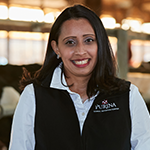
Veridiana Daley
University of São Paulo
WHAT WILL I LEARN?
Be one of the first to learn from experts who were part of today's most important book on dairy cattle nutrition.
iNTRODUCTION WITH DR. WEISS
- The Dairy NASEM: History and process;
- Use of NRC Nutrient Requirements;
- NASEM Process;
- 2021 Dairy NASEM Project;
- Committee Challenges;
- Software.
Chapter 1 - requirements WITH DR. WEISS
- Classical definition of ‘requirement’;
- NASEM Definition of Requirements;
- Nutrient Response;
- Terms used by NASEM;
- Adequate intake Example;
- Formulation goal vs. NASEM requirement or AI;
- Variation in calculated requirements;
- Suggested (Weiss not NASEM) safety factors.
Chapter 2 - Dry Matter Intake with dr. hutjens
- DMI changes in the 2021 model;
- Days in milk;
- Forage factors;
- Animal impact on DMI;
- Carbohydrates;
- Fat;
- Protein;
- On-farm tools to evaluate DMI;
- Power of feed efficiency;
- Milk yield targets for efficiency;
- Economics of feed efficiency;
- Dry matter content of TMR;
- Monitor Sorting;
- Pasture management.
Chapter 3 - Energy with Dr. Vandehaar
- Balancing diets to meet energy needs;
- Feed energy values;
- Conventional Energy Scheme;
- Approximate energy flow by nutrient class;
- Energy scheme of NRC 2001;
- Energy supply;
- Energy requirements;
- Energy scheme of NASEM 2021;
- Residual Organic Matter;
- Estimating NDF Digestibility: User Options;
- Digestibility discount;
- NDF Digestibility with changing intake and starch;
- NDF digestion at different DMI and diet starch%;
- The effects of intake and diet energy density on digestibility in NRC 2001 vs NASEM 2021;
- Effect on diet DE value of replacing starch with fiber;
- Estimating Diet ME Values;
- Maintenance requirement;
- Body weight change: Frame vs Reserves;
- Requirements of frame vs reserves gain in cows;
- Other changes to energy requirements;
- NE-allowable milk at 42 and 62 lb DMI of example diets;
- Another test: High byproduct diets;
- High byproduct diets in NRC 2001 vs NASEM 2021;
- Feeds supply energy and also alter intake and partitioning;
- Feed efficiency increases as production relative to body weight increases.
Chapter 4 - FAT with dr. hutjens
- Defining fat and oil;
- Classifying fatty acids;
- Ether extract/lipids;
- Fatty acids;
- Total tract fat digestibilities;
- Impact of fat on reproduction;
- Impact of fat on human health;
- NASEM guidelines;
- MODEL REPORTS;
- On-farm applications;
- Hutjens FA supplementation;
- Milk fat synthesis;
- Milk fat structure;
- Milk fat sources;
- De novo Fatty Acid Synthesis;
- Preformed Fatty Acids;
- Milk Fatty Acid Origin;
- Effect of feeding fat;
- Feeding fat and fat test;
- Your protein: fat ration (Holstein);
- Milk fat test inversions;
- Ration factor that can contribute to low fat test;
- Component variation on dairy farms.
Chapter 5 - Carbohydrates with dr. hutjens
- Defining carbohydrates;
- Carbohydrate location in a plant cell;
- Carbohydrate fractions;
- Residual organic matter (ROM);
- Neutral detergent fiber;
- Neutral detergent fiber digestibility;
- Neutral detergent soluble carbohydrate;
- Rumen volatile fatty acids;
- Rumen and total tract digestion;
- Starch update;
- Rate of rumen starch fermentation;
- Starch dynamics with corn ingredients;
- Forage neutral detergent fiber (fNDF);
- Relationship of minimum forage NDF (fNDF),
- Minimum ndf, and maximum starch levels;
- Modifiers of minimum fNDF;
- Physically effective NDF (peNDF);
- Physical adjusted NDF (paNDF);
- Applying carbohydrate tools in the field;
- Penn state particle box;
- Kernel processing score;
- Rumination collars / tags;
- Manure evaluation;
- Fecal starch milk response;
- Corn particle size;
- Shelled corn energy values.
CHAPTER 6 - Protein with Dr. Hélène Lapierre
- Novelties;
- AA composition of proteins;
- [Ser] in canola meal;
- Correction factors to account for incomplete recovery of AA with a 24-h hydrolysis of a protein;
- Prediction of the supply of MP and mEAA;
- RUP;
- MCP;
- Duodenal endogenous;
- Duodenal flow of EAA: factorial approach;
- MP and mEAA supply;
- Prediction of MP and mEAA supply;
- Prediction of MPY;
- Quadratic Scaling;
- Protein and amino acid recommendations;
- NASEM (2021): Protein and EAA requirements; Factorial approach;
- Secretions and accretions: net demand;
- Endogenous urinary loss (EndoUri);
- Other functions for EAA?;
- Accretions (g TP/d);
- Net TP demand;
- EAA composition of proteins;
- EAA composition: Endo Uri;
- EAA composition;
- Net EAA demand (g EAA/d);
- Efficiency of utilization;
- Histidine net flux (g/d);
- Combined EffEAA or EffMP;
- Defining target EffEAA or EffMP;
- Target EffEAA and EffMP;
- Recommendations for EAA;
- Recommendations for MP;
- Example of Met recommendations (recm);
- Comparison of models;
- NASEM (2021) vs. other models;
- MP recommendations, g/d;
- Conclusions: supply;
- Conclusions: recommendations.
CHAPTER 7 and 8 - Minerals and vitamins with Dr. Weiss
- ‘Requirements’ vs Adequate intake;
- Adequate intake Example;
- Factorial system for requirements and some AI;
- Changes to maintenance estimates;
- Changes in lactation reqt (per kg of milk);
- Similar for trace minerals;
- Major Changes for Minerals and Vitamins;
- Ingredient Ca AC (2001 vs 2021);
- Magnesium: Absorbed Requirement was Increased;
- Magnesium AC;
- Magnesium: Dietary Requirement;
- Mg absorption is affected by common diet conditions;
- Important Practical Updates;
- Trace minerals;
- AC changed when new data were found;
- Major Changes from 2001;
- Major Changes from 2001;
- Changes from 2001;
- Limitations of current TM requirement systems;
- NASEM Vitamin Report;
- Vitamin A;
- Potential Vitamin A Adjustments;
- Vitamin D;
- Effect of duration of sun exposure on vitamin D status of dairy cows (Summer, Denmark);
- Vitamin D AI;
- Herds fed around ~20,000 IU/d (~30 IU/kg BW);
- Vitamin E;
- Vitamin E when grazing (NASEM 2021);
- NRC 2001 vs NASEM 2021: Major minerals;
- NRC 2001 vs NASEM 2021: Trace minerals;
- NRC 2001 vs NASEM 2021: Vitamins.
CHAPTER 9 - Water with Dr. Paul J. Kononoff
- Important functions of water;
- Minerals in water;
- Water is a source of nutrients;
- Water flow, % of total water intake (TWI);
- Water use by lactating cows above Thermoneutrality;
- Free water intake, calves and heifers;
- Factors affecting water intake;
- Water loss;
- Water Quality;
- Sources of water quality guidelines;
- Total Dissolved Solids (TDS);
- Water quality, Guidelines for Total Dissolved Solids (TDS) in Water for Dairy Cattle Consumption;
- Nitrate;
- Hardness;
- Ionic constituents of water;
- Sulfate;
- Caution: Water and DCAD;
- Sulfate: recommendations;
- Iron;
- Cumulative Water Intake Fe concentration?;
- Summary and Conclusions.
Chapter 10 - Nutrient requirements of the young calf with James Drackley
- Three phases of digestive function;
- Calf or heifer?;
- Body weight conversions;
- Dry matter intake;
- Prediction equations for starter intake;
- Predicted starter intake at two milk feeding levels;
- General features of
- calf model;
- Comparison of Observed and Predicted ADG for
- Calves;
- Problems with NRC 2001 energy equations;
- Determination of maintenance requirement;
- Maintenance energy in weaned calves;
- Effect of environmental temperatures on
- maintenance requirement;
- Are maintenance energy values different for
- small breed calves (e.g., Jersey)?;
- Derived an equation linking retained energy (NEg) to body weight gain;
- Efficiency of ME use for gain, milk only;
- Efficiency of ME use from starter;
- Calculating proportions of fat and protein in gain;
- Fats as energy sources;
- Carbohydrates as energy sources;
- Fats versus carbohydrates as energy source;
- Protein for young calves;
- Metabolizable
- protein for maintenance;
- Nitrogen Composition of the Gain;
- Efficiency
- of use of absorbed amino acids for BW gain;
- Vegetable proteins in milk replacer;
- Requirement tables;
- Calculation of feed ME contents: milk;
- Calculation of feed energy values: solid feeds;
- Validation of model with experimental data;
- Comparison of new system with NRC, 2001;
- Mineral requirement for calves;
- Recommended dietary concentrations;
- Changes in recommended mineral concentrations;
- Recommended concentrations of macro minerals;
- Recommended concentrations of trace minerals;
- Changes in recommended
- vitamin allowances;
- Rates of milk or milk replacer feeding;
- Framework for feeding rates;
- Rates of milk feeding;
- How much milk should be fed?;
- Calf starter feeds;
- Calf starters and fiber digestion;
- Forage provision;
- Weaning management;
- Effects of weaning on growth rates;
- Feeding frequency;
- Group feeding and housing;
- Fetal nutrition;
- Colostrum;
- Water and electrolytes;
- Disease;
- Milk replacers;
- Whole milk;
- Feed additives.
CHAPTER 11 - Growth with Dr. Michael VandeHaar
- NASEM 2021 Growth;
- Body Weight Terms;
- Maintenance requirement of heifers;
- Growth;
- New growth equations;
- Fat and protein content of EBW in Holstein cattle;
- Growth equations;
- Comparison of retained energy (RE) equations;
- Composition of body gain in NRC 2001 vs new;
- Effect of diet on future productivity;
- Target Weights, Ages, and Daily Gains for Growing Dairy Cattle;
- Requirements for energy and protein in Holstein heifers;
- Predicting gain from ME intake;
- Diets for young heifers based on model software;
- Final thoughts and future needs.
CHAPTER 12 - Dry and Transition Cows with Dr. Bill Weiss
- Changes from NRC 2001;
- Metabolic Disorders Associated with Transition;
- Drop in prepartum DMI may increase risk for ketosis;
- Higher starch prefresh may increase ketosis;
- Strategies to Reduce Hypocalcemia;
- Dry cows: NASEM vs Hypocalcemia prevention;
- Effect of Prefresh Macronutrients on Post calving responses;
- Dry Cow Diet Protein and Milk Production;
- Dry Cow Diet CP and Milk Production;
- Dry Cow Diet MP and Milk Production;
- Increased prepartum MP did not affect milk yield by cows and only minor effect on milk protein yield in cows >36 kg/d);
- Increased prepartum MP increased FCM and protein yield by 1st lactation cows;
- NASEM 2021 Model;
- Prefresh, starch, fiber and energy;
- Use of prefresh diet to help rumen adapt to higher starch lactation diet;
- Estimating DMI by NRC 2001;
- Estimating DMI by NASEM, 2021;
- Estimated DMI by Cows using NASEM 2021;
- New DMI Equations;
- Calculation of gestation requirements;
- Gestation MP and NEL Requirements;
- Modification to Energy Values;
- Specific Mineral/vit for Prefresh;
- Colostrum Nutrients;
- Example reports for prefresh cows and heifers;
- Fresh Cows: No specific requirements included;
- Effect of High Protein to Fresh Cows;
- Because high CP increased DMI and digest, higher milk ≠ ketosis;
- Experiment designed to evaluate carry over effects;
- Using the New Model for 15 DIM cow.
CHAPTER 13 - Grazing cows with Dr. Bill Weiss
- NASEM Grazing Module only active for lactating cows;
- Edit Feed Menu;
- Grazing cows vs. confined cows;
- Estimating DMI for Grazing Cattle;
- Energy Requirements for Grazing Cattle;
- Energy Requirements for walking;
- Energy Requirements for gathering food;
- Total Grazing Requirements;
- Grazing energy is much less than in NRC 2001;
- Using software for grazing heifers and dry cows;
- Using software for grazing heifers and dry cows;
- Dry cow example;
- Heifer example;
- Protein and grazing cattle;
- Energy loss from Excess N intake;
- Adequate intake for Supplemental Vitamin E;
- AI for vitamin E is adjusted for grazing cows;
- Vitamin E when grazing (NASEM 2021);
- Potential Vitamin A Adjustments;
- Potential Vitamin A Adjustments;
- Vitamin D;
- Effect of sun exposure on vitamin D synthesis;
- Vitamin D synthesis in cows;
- Effect of duration of sun exposure on vitamin D; status of dairy cows (Summer, Denmark);
- Grazing does not affect absorbed Mg requirement;
- But grazing can affect Mg absorption;
- Magnesium: Dietary Requirement, g/d;
- High S forage = Reduced Copper Stores;
- Summary;
CHAPTER 14 - Environmental Impacts of Dairy Cattle with Dr. Ermias Kebreab
- What does the Chapter Cover?;
- GHG Emissions (Global);
- Environmental (GHG) Impacts;
- The U.S. Methane Breakdown;
- Dairy contribution to GHG;
- Enteric Methane;
- Enteric Methane;
- Enteric Methane Estimation;
- Methane Mitigation Strategies;
- Genetic Gains;
- Diet/Nutrition/Genetics;
- Feed Additives;
- Macroalgae – in Vivo;
- Seaweed cuts emissions 80% – Beef;
- 3NOP cuts methane >30%;
- Jayanegara et al. 2018 – Dairy;
- 3NOP cuts emissions 23 – 41%;
- 3NOP – Early Life Intervention;
- Other Solutions;
- Risks of N Surplus in Dairy Production;
- Optimizing N Use Efficiency;
- Nitrogen Estimation;
- Minerals;
- Minerals – Mitigation;
- Mineral (P) Estimation;
- Nitrogen Estimation;
- Summary.
CHAPTER 15 - BY-PRODUCT FEEDS with DR. HUTJENS
- Defining By-product Feeds;
- By-product Feed Examples;
- The “2p” Principles;
- Positioning By Product Feeds;
- Pricing Feeds Using Computer Software;
- Illinois Breakeven Prices Feeds;
- Nasem Overview;
- By-products In Ruminant Rations;
- Names Grouping Of By-products;
- Poorly Digestible Fiber Sources (nasem);
- Wheat Straw;
- Poorly Digested Fiber By-products;
- Protein Feeds (nasem);
- Blood Meal;
- Fish Meal;
- Digestible Fiber Sources (nasem);
- Beet Pulp;
- Citrus Pulp;
- Soy Hulls;
- Wheat Middlings (bran, Millrun, And Shorts);
- Energy / Protein Source (nasem);
- Brewers Grain;
- Corn Gluten Feed;
- Corn Distillers Grain;
- Corn Hominy;
- Molasses;
- High Fat Sources (nasem);
- Fuzzy Cottonseed (whole);
- Rice Bran;
- Hutjens Guidelines For Handling By-products On Farms;
- Feed Storage On The Farm;
- Storage, Mixing, And Loading;
- Liquid Additions;
- Considerations Managing By-product Feeds;
- Evaluating Shrink;
- Purchasing By-product Feeds;
- Coop / Company Advantages;
- Pricing Ration Balancing Services.
CHAPTER 16 - FEED ADDITIVES with DR. HUTJENS
- Defining feed additives;
- U.S. Feed additive use;
- Feed additive concepts;
- Roles of feed additives;
- Influencers when selecting feed additives;
- NASEM definition of feed additives;
- List of feed additives in chapter 16;
- Applications with ionophores;
- NASEM ionophore;
- Meta analysis for monensin;
- NASEM ionophore applications;
- NASEM ionophore impact on milk fat yield;
- NASEM ionophores for growing heifers;
- Applications with yeast products and dfm;
- NASEM yeast and dfm;
- Probiotics (direct fed micro);
- Silage inoculants applications;
- NASEM silage inoculant update;
- Hutjens silage bacterial inoculant;
- Fermentation profile for ensiled feeds;
- Applications with enzymes;
- NASEM enzymes;
- Hutjens enzymes;
- Applications essential;
- Oils and phytonutrients;
- NASEM essential oils;
- Hutjens essential oil compounds;
- Additives recommended for lactating cows;
- Hutjens additive priorities;
- Additives recommended for close up dry cows;
- Additives recommended for fresh cows;
- Mycotoxin binders;
- Signs of mycotoxin;
- Mycotoxin levels (diet dm basis);
- Flow agents;
- Flow agents: what’s new!;
- Applications with buffers;
- Hutjens buffers;
- Bicarbonate type I and II errors.
CHAPTER 17 - Agents That Are Toxic To Dairy Cattle with DR. HUTJENS
- Plant toxin: alkaloids;
- Plant toxin: bracken fern;
- Plant toxin: coumarin;
- Plant toxin: gallotannin;
- Plant toxin: gossypol;
- Plant toxin: nitrates;
- Plant toxin: prussic acid;
- Plant toxin: trypsin inhibitor;
- Mycotoxins;
- Mycotoxin: aflatoxin;
- Mycotoxin: deoxynivalenol;
- Mycotoxin: fumonsins;
- Mycotoxin: ochratoxin;
- Mycotoxin: patulin;
- Mycotoxin: zearalenone;
- Microbes in feed or water: botulism;
- Microbes in feed or water: cryptosporidiosis;
- Microbes in feed or water: enterohemorrhagic escherichia coli 0157:h7;
- Microbes in feed or water: listeria;
- Microbes in feed or water: salmonella;
- Prions;
- Signs of mycotoxin;
- Flow agents (mycotoxin binders);
- Nitrate guidelines;
- Nitrate consideration;
- Testing for toxins.
CHAPTER 18 - FEED ANALYSIS with DR. PAUL J. KONONOFF
- Introduction;
- Protein;
- Fiber, the detergent system;
- Neutral Detergent Fiber (NDF);
- Acid Detergent Fiber (ADF);
- Starch and Water Soluble Carbohydrates (WSC);
- Fat/Fatty Acids;
- Minerals;
- Residual Organic Matter (ROM);
- Particle Size: Penn State Particle Separator;
- NDF Digestion Analyses;
- Measuring In Situ A, B, and C Protein Fractions;
- Major analytical factors to consider;
- Intestinal Digestibility of RUP (dRUP);
- Bioavailability of rumen protected amino acids.
CHAPTER 19 - Nutrient composition of feeds with DR. Paul J. Kononoff
- Introduction;
- Feed classifications, type and names;
- Statistical Analysis and Generation of Data;
- In large data sets, mean can be reasonable even with extreme contamination;
- Example of “solution”;
- Example 1 cluster analysis used to identify ‘immature’ from ‘mature’ legume hay;
- Example 2: Within Feed Classification;
- Example 3: Identification of “Correct” Feed Classification;
- Summary and changes since 2001;
- Acknowledgments.
CHAPTER 20 - Model Description and Evaluation with Dra. Veridiana Daley
- Modeling as an integral part of the Scientific Process;
- NASEM: Basic Concepts;
- How To Evaluate a Model?;
- 2021 NASEM: Software Free of Charge;
- Model Abbreviations – Units – Inputs;
- Model Units;
- Model Inputs;
- Nutrient Supply Model – Feed Library;
- Feed Library – NASEM;
- Feed Categories Used for Model Calculations;
- Feed Library – Lab analysis;
- Model Calculations: Fatty Acids (FA);
- Model Calculations: FA Digestion;
- Nutrient Supply Model – Intake;
- Free Water Intake (FWI) (kg/d);
- Dry Matter Intake (DMI) Calves;
- DMI Heifers (Far-off, kg/d);
- DMI Dry and Transition Cows;
- DMI Transition Cows (<3 wk prepartum);
- DMI Lactating Cows;
- Nutrient Supply Model – Energy and Protein; Supply;
- Carbohydrate fraction;
- Energy Supply;
- Protein Supply: RDP & RUP;
- Protein Supply: Microbial Protein;
- Protein Supply;
- Nutrient Utilization and Animal Production;
- Requirements Energy, MP, EAAs;
- Maintenance Requirement;
- Activity Requirement;
- Protein Requirement;
- Growth;
- Changes in Body Weight and Composition – Growth and Lactation;
- Gestation;
- Lactation Requirement;
- Predictions for Milk Components Model Evaluation;
- Milk Protein Prediction;
- Milk Fat Prediction;
- NASEM Computer Software;
- Model Evaluation: Milk and Components;
- Model Evaluations: Fecal Nutrient Output (kg/d).
You get bonus classes with different specialists!

Using the NASEM Dairy Model and how to fine tuning profits and diets using NASEM 2021

Managing inflammation in transition dairy cows.

Hypocalcemia can be reduced steps that we know will work.
12 months of access to the
INTERNATIONAL DAIRY NUTRITIONIST COMMUNITY!
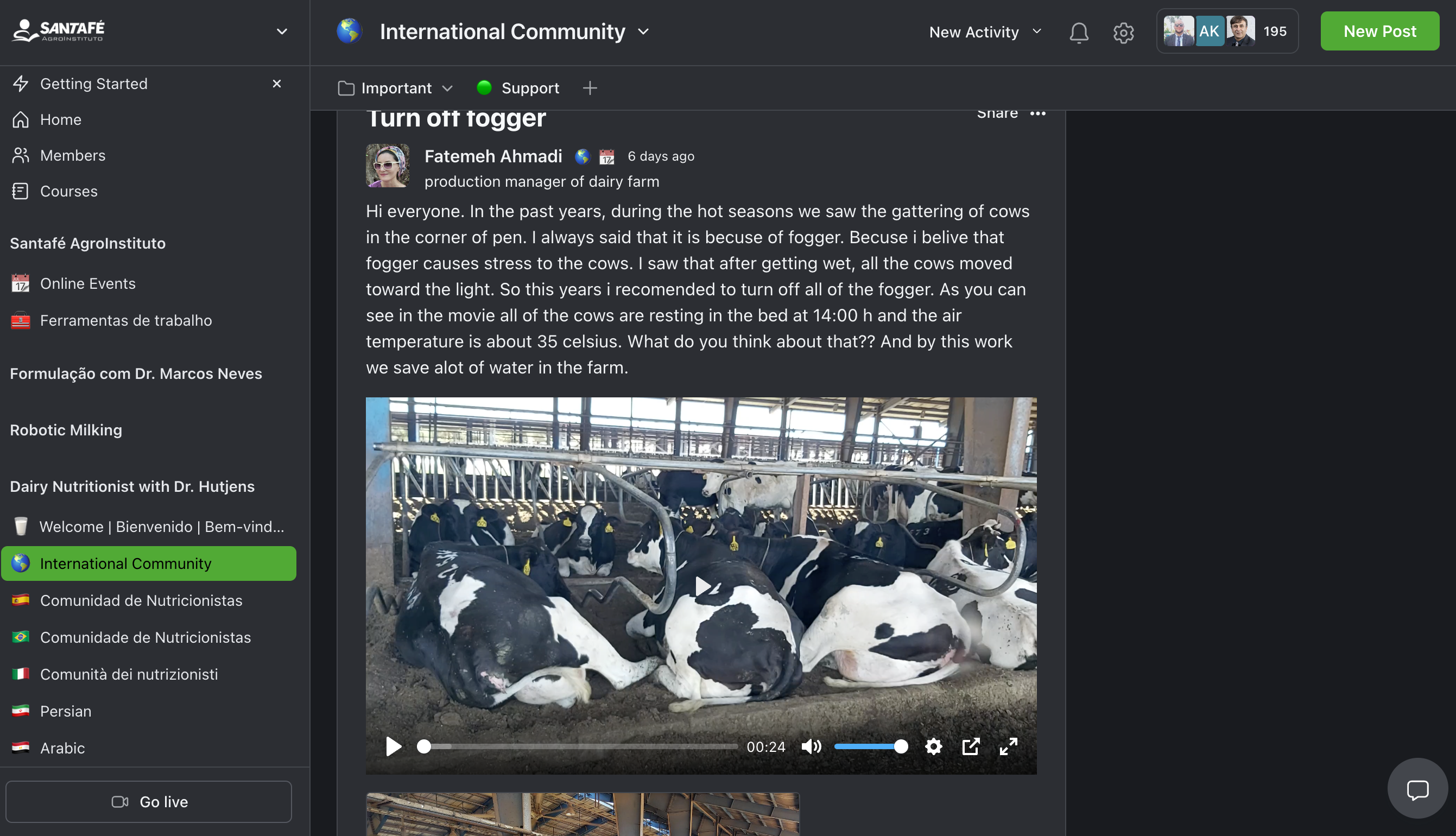
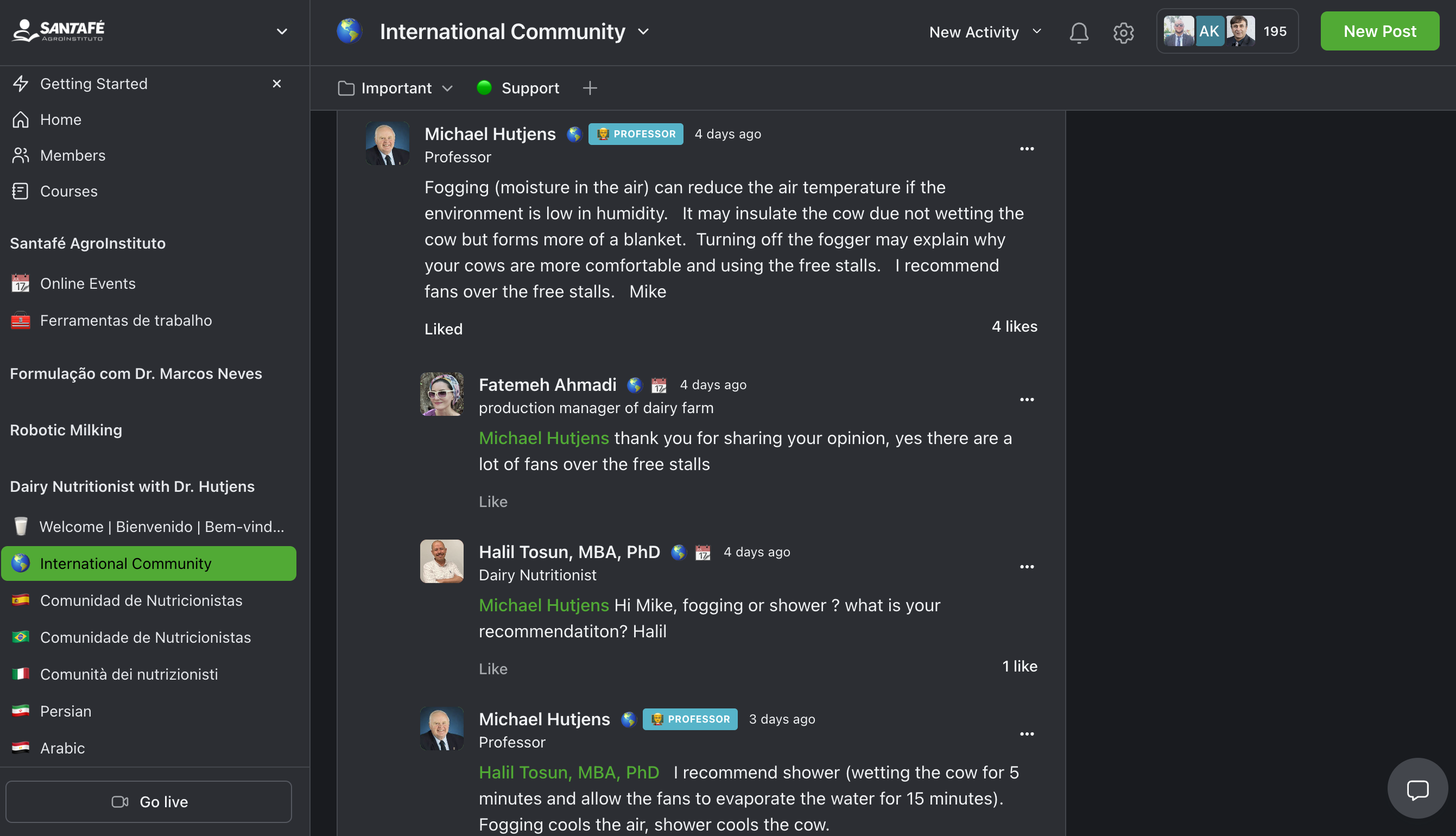
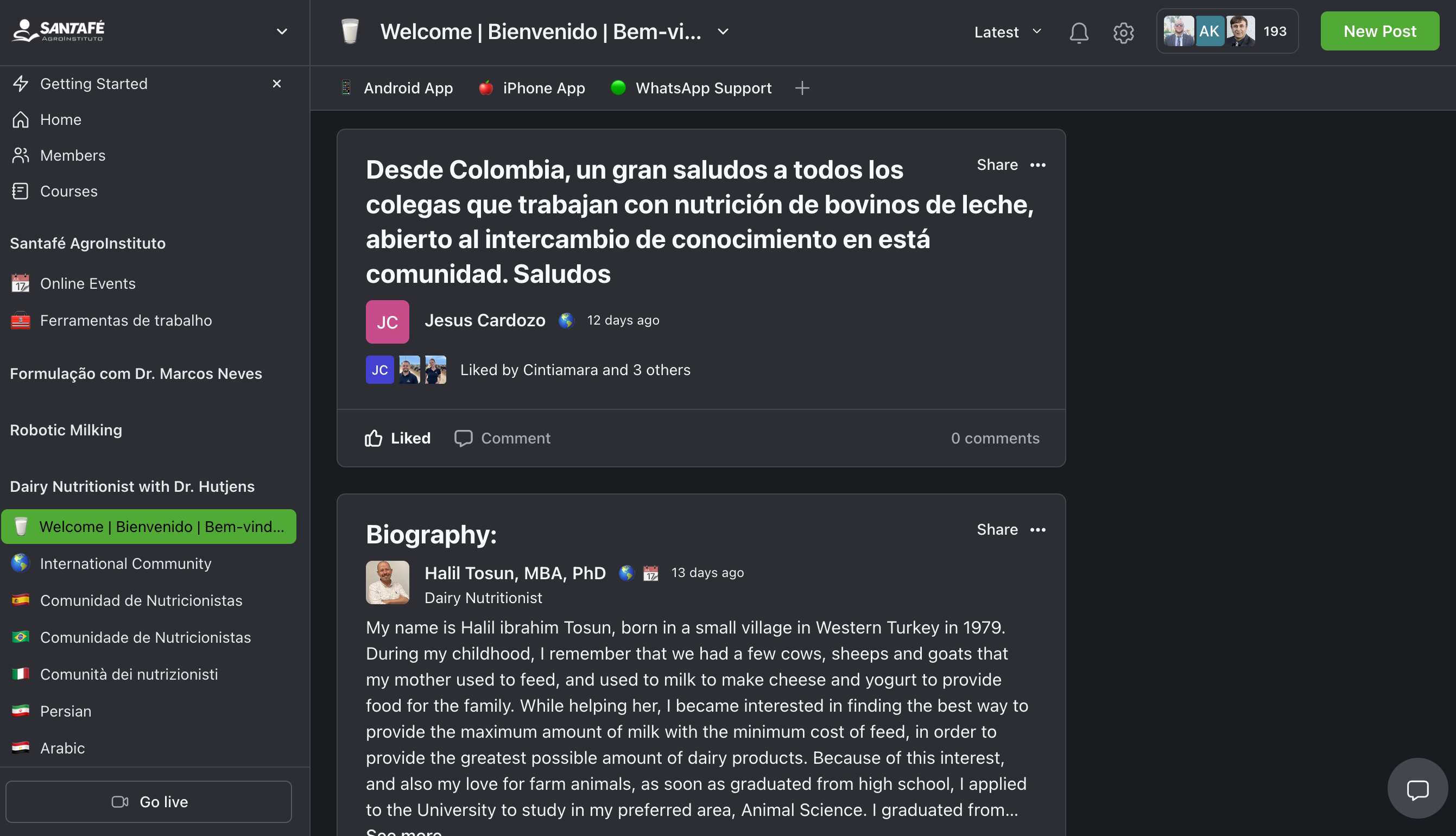
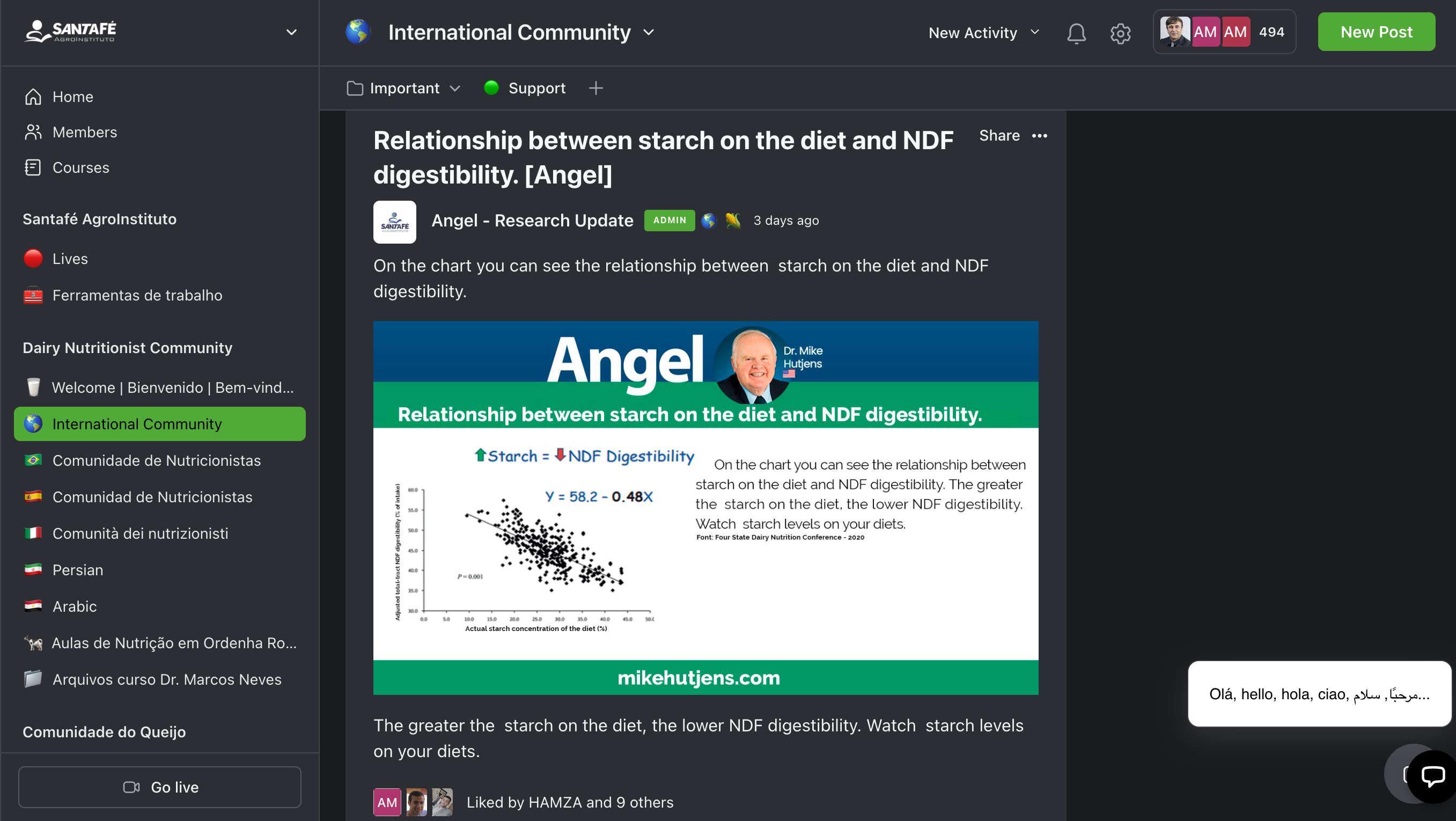
+ Networking: Have access to a closed community with professionals to send your questions, promote debates on relevant subjects, stay on top of market news, make contacts in the area, share experiences, help and be helped;
+ All this so that you absorb all the knowledge and put it into practice in your own time.
The course is for who:
- Nutritionist, agronomist, technician, veterinarian, or zootechnician and want to differentiate yourself from other professionals in the market, having access to the most complete guide to nutrition, with articles, references, and modern and efficient studies that the vast majority do not know or do not master the subject;
- He is a student and already wants to take his first professional steps the right way, drinking straight from the source with a technical background of excellence to stand out in the market;
- He is a milk producer and wants to understand the best dairy cow nutrition processes to guide technicians and other professionals working on his farm.
SEE EVERYTHING YOU WILL LEARN IN THIS ONLINE COURSE
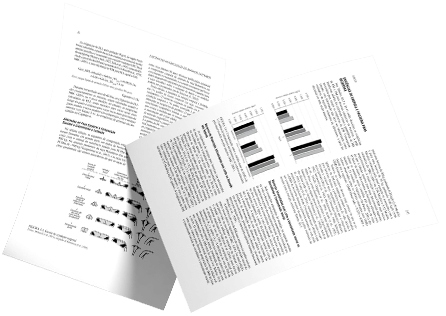
In addition to the 20 chapters of the NASEM 2021 book explained in video lessons, our team has prepared exclusive material for you to help you interpret all the content available at NASEM:
Bonus Classes!
Learn with different specialists!

12 months of access!
International Dairy Nutritionist Community
If you wanted to attend a face-to-face training with all these renowned experts, you would pay around $3000 USD.
And with the bonus I’ve decided to give you would pay:
-
Advanced Dairy Nutrition Online Course based on NASEM 2021 -
$999 -
Hypocalcemia can be reduced steps that we know will work with Dr. Jesse Goff -
$199 -
How to fine tuning profits and diets using NASEM 2021 with Dr. Hutjens -
$199 -
Managing inflammation in transition dairy cows with Dr. Bradford -
$149 -
12 months of access to International Dairy Community -
$399 -
Using the NASEM Dairy Model with Dr. Hutjens -
$199
$2144
But not today.
We decided to sell the Advanced Dairy Nutrition Online Course based on NASEM 2021 for only $399+VAT. And all the bonus above for FREE.
$399+VAT
CERTIFICATE OF COMPLETION
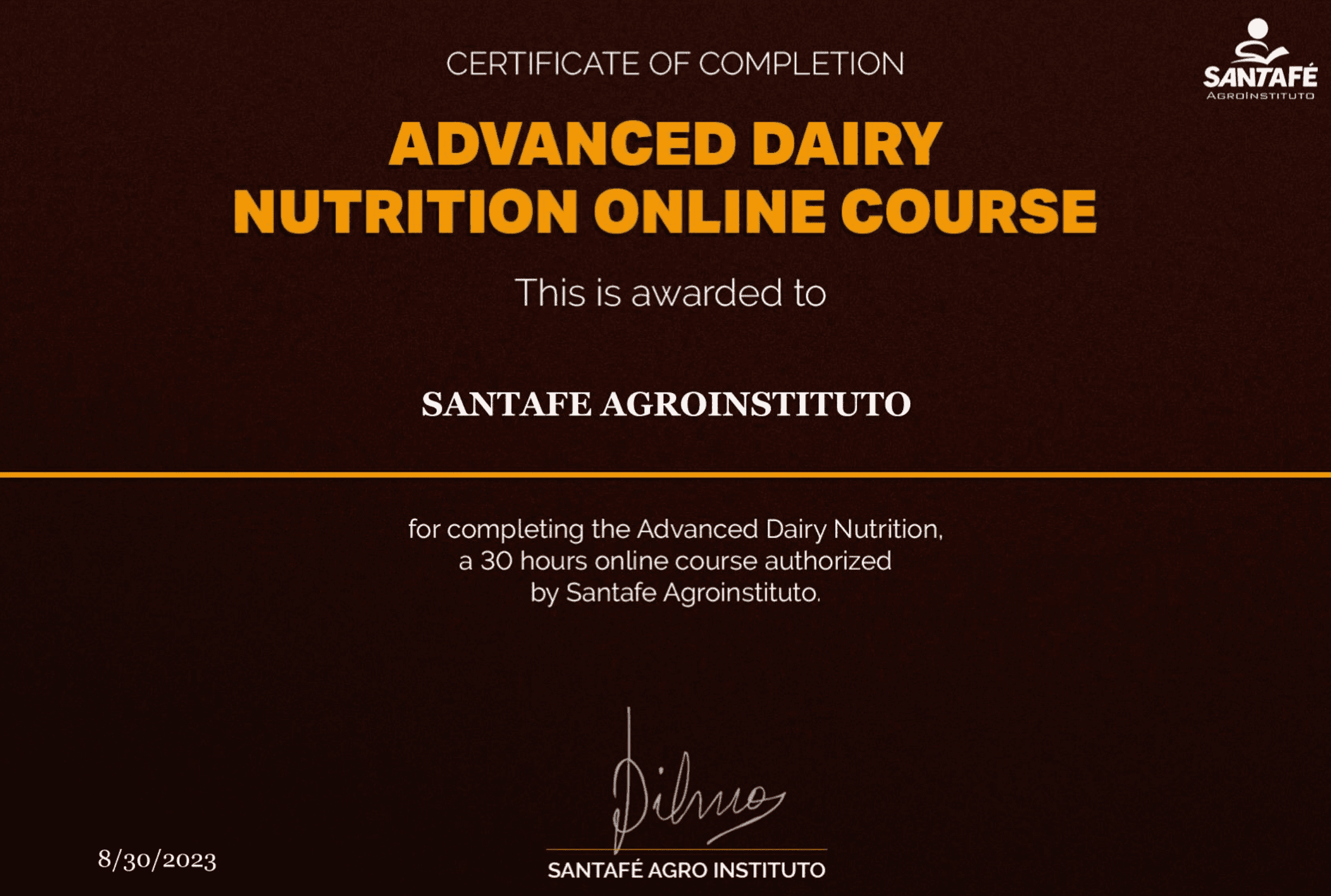
ZERO risk for you!


7-day Unconditional Guarantee for you to test the course.
Just send an email to suporte@santafeagroinstituto.com.br within 7 days asking for your money back, and I’ll return every penny without even asking why, ok?
FAQ
The course is already available. As soon as we confirm the payment, you will receive your log-in information by e-mail and you can start the classes immediately.
Yes. By accessing the Hotmart App, you will be able to download the classes and watch it offline.
Yes, with duration of 20 hours.
The course is divided into video classes that you can watch whenever you want and as many times as you want on your smartphone or computer. You will receive on your e-mail a log-in access information that allows you to attend the course through the entire signature period, which is 12 months and can be renewed.
Yes, it does. You will receive all the presentation of each class.
©2023 All rights reserved – Santafé Agroinstituto.